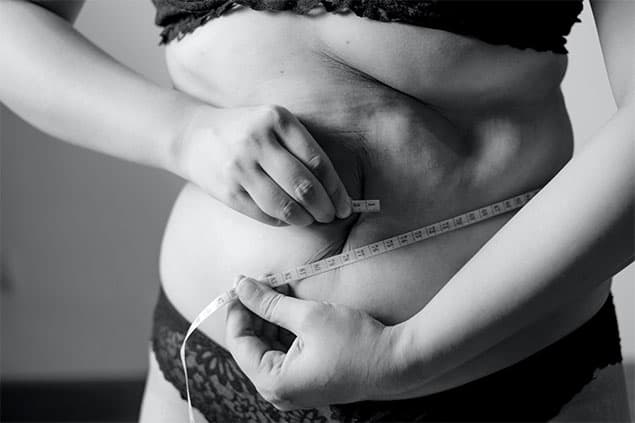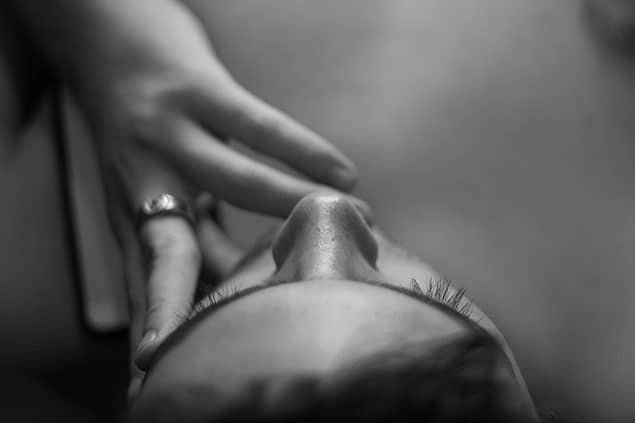August 7th, 2023
Dr. Thomas Bell, MD
Humans lose their hair every day; this is a fact of life. Since birth, our body is in a constant state of renewal. Every minute, our body sheds thousands of skin cells, and millions per day as part of our body’s constant renewal cycle.
Hair follicles also follow this pattern, albeit at a much slower pace. It is common to lose between 50-100 hair follicles a day, all without even noticing.
However, issues occur when the hair renewal process halts, and new growth does not replace fallen follicles. This is when the signs of thinning and balding hair start to show.
Hair loss can be an emotional experience for those who suffer from it. Embarrassment, anger, denial, and dread are all common reactions expressed during this time. Many of the clients we see daily are those seeking an experienced plastic surgeon in Toronto to help them with their hair loss.
But why does follicle production cease in the first place, and what causes hair loss in men?
These are some of the common hair loss causes and what we can do to treat them.
Our Experience with Treating Hair Loss
Led by the incomparable Dr. Bell, with 25+ years of experience and thousands of hair transplant procedures performed, the skilled and experienced Toronto Plastic Surgeons team uses advanced plastic surgery techniques and state-of-the-art equipment to produce incredible results that treat hair loss while reducing the risk of complications.
Signs and Symptoms of Hair Loss
There are many signs and symptoms of hair loss. This can include any of the following:
Gradual Thinning
Gradual hair loss is the most widely common hair loss symptom. The human head usually sheds around 50-100 hair follicles a day, which may sound like a lot, but considering there are hundreds of thousands of hairs on your head, this hair loss is generally not noticed and is gradually replaced with more growth as the follicles renew themselves. However, thinning can become a noticeable hair loss symptom when the hair follicles cease their renewal process, typically due to the natural aging process.
Hair follicles require a supply of nutrients from the body like iron, protein, biotin, and Zinc. When we age, the signals that tell your brain to deliver these nutrients to the hair can stop, resulting in the follicles on the head dying off and falling out.
For men, thinning often begins at the hairline along the forehead, while women typically notice that the part in their hair broadens wider over time. Natural thinning hair is a gradual process versus all the hair on the head falling out at once because each of those 100,000 hairs on your head has its lifespan that receives its own supplies of nutrients.
Hair thinning doesn’t just start when you’re older, either. While we previously mentioned that roughly 85% of men experience a form of hair loss by the age of 50, roughly 25% of men will begin to notice male pattern baldness before the young age of 21.
Circular Patches and Bald Spots
Bald spots, also known as Alopecia Areata, are a hair loss symptom that occurs when hair falls out in clusters, leading to circular patches of missing hair. Like gradual thinning, bald spots may not be particularly noticeable at first when hidden amongst the rest of your hair. However, the signs may become more visible as the balding spot increases or another patch forms and connects with the initial patch.
Moreover, bald patches can form on the scalp and within the beard, eyebrows, eyelashes, and other places on the body. Usually, this condition results from the immune system mistakenly attacking the hair follicles, typically due to illness or acute stress (more on this later).
Depending on the cause behind the hair loss, as well as the extent of it, this hair loss symptom can be either temporary or permanent.
Sudden Hair Loss and Excess Shedding
While the human head loses 50-100 follicles daily, certain conditions may result in accelerated shedding levels. The scalp can lose several hundred follicles in a day, surpassing the renewal rate of growth and resulting in thinned-out hair. This symptom of hair loss is usually identifiable by its noticeability in your daily routine. The person might find large quantities of hair coming out in the shower when brushing their hair on their pillow in the morning.
There are several reasons for this symptom of hair loss, the biggest of which is usually high levels of acute or ongoing stress. Fortunately, this type of hair loss is only temporary in many cases, though it may lead to overall thinning.
Full Body Hair Loss
Full-body hair loss, also known as Alopecia Universalis, is a type of hair loss that, as the name implies, causes hair to fall out all over the body at once. Similar to bald patches, this is usually a result of the white blood cells in your body attacking the hair follicles, mistaking them for foreign invaders. The cause for this hair loss symptom is not yet fully understood, though it has been linked to conditions such as thyroid, vitiligo, or high stress.
This can also be the result of medical treatments such as chemotherapy. Like Alopecia Areata, this hair loss is usually temporary.
Scaling Patches
Tinea capitis, also known as ringworm of the scalp, is a type of fungal infection that can occur on the scalp. This condition has several signs: itchiness, scaly patches, irritation and bleeding, and hair loss symptoms.
Ringworm is a very contagious infection transferred by touch and is common among toddlers and children. It can be transferred from human to human, animal to human, and even from object to human contact.
Treating ringworm usually requires oral medication to kill off the fungal infection and medicated shampoos to help reduce the spread amongst the scalps. Usually, the hair loss from this condition is temporary; however, if there are patches of severe inflammation, the area may result in scarring and, thus, permanent hair loss.
Causes of Hair Loss
Aging
As we age, our body experiences tons of changes ranging from wrinkles forming, skin sagging, weight fluctuations, and of course, causes hair loss.
Hair follicles are made from strands of protein in the body. For necessary growth, these proteins require a supply of nutrients such as iron, protein, biotin, and zinc to continue healthy growth. As we age, the brain begins to stop sending signals to the hair, resulting in the hair dying off, falling out, and being unable to re-grow, leading to hair loss causes. When this happens, you might wonder why all our hair doesn’t simply fall out at once?
This is because each of the roughly 100,000 hairs on our head is on its own independent lifespan and renewal cycle.
When aging causes hair loss, there is no real magic number, and sadly, it’s not even reserved for the senior class. Signs of balding can happen as early as the teenage years. Studies have shown that roughly 25% of men will start showing signs of hair loss before 21, and this number skyrockets to 66% by the age of 35. Finally, by age 50, despite being over a decade and a half before even being considered a senior, an astounding 85% of men will experience either hair loss or thinning hair.
Despite leading the majority for causes of hair loss in men, hair loss by aging is not only a men’s issue. Women, too, are affected by hair loss as they age. By the age of 50, nearly 40% of women experience some form of detectable hair loss.
Genetics
Genetics is one of the biggest components of our hair and hair loss causes. Whether it comes down to colour, texture, or lifespan, family genetics largely play a part in hair loss. Those with a family history of balding and thinning hair are much more susceptible to experiencing it for themselves.
You’ve probably heard that genetics causes hair loss to skip a generation in families, in which every other generation (usually just among men) will avoid the effects of hair loss, whether it be through their older siblings, parents, or grandparents.
But is there any merit to this claim, or is it simply wishful thinking from the eldest children of balding paternal figures?
The truth is, it’s complicated. Genetic traits don’t simply pick and choose whether or not to transfer to the next generation. However, like all myths, there is some truth to its origins.
While disputed, many theorize that the trait that causes hair loss is a recessive gene. Recessive genes don’t ever truly “skip” transferring to a generation. Otherwise, that gene would be lost. Instead, recessive genes are not expressed due to the dominant gene it is paired with.
A common example used to explain this is the gene for blue eyes.
Our DNA uses genes from our mothers and fathers that pair together. If both genes contain the blue eyes gene, their child will have blue eyes. If neither has the gene, the child will not have blue eyes. If the blue-eyed gene comes from one parent but not the other, the weaker, recessive gene (blue eyes) carries over into your DNA without presenting itself.
The gene is still carried in the child, however, and can be passed on to their future children. This cycle repeats itself until paired with another blue-eyed gene. This is what causes the genes to “skip” generations – sometimes, it can skip several generations, and other times it may not skip at all.
This same idea can be applied to the genes that provide hair loss causes.
It’s also studied that while you can inherit dominant hair genes from either parent, most of the time, it is passed on from the female side of genetics. You are far more likely to experience balding if it runs in your mother’s family history.
Stress
Stress is another one of the leading hair loss causes. When your hair is in its growing period, it’s in what is called the Anagen phase. When that halts, and the hair sheds, it’s known as the telogen phase. Significant emotional stress can cause an abrupt shift in the hair follicle cycle and force the follicles prematurely into the telogen phase
.
This wouldn’t be caused by a single bad day and would require more significant ongoing stress, such as a grieving period over a loved one, high-stress full-time work, and emotional turmoil over the pandemic and quarantine. It can take approximately three months before this type of hair loss begins to happen.
A common sign of these causes of hair loss can be found in its acute nature. It happens very fast and very noticeably. Hair loss during this period can be around 200 hairs a day – that’s double the usual if not more. Those who suffer from stress hair loss will often see the hair come out in the shower, their pillowcase, and their brush.
The bright side is that this type of hair loss is also usually temporary. As long as the cause of stress has been resolved, the associated hair loss should cease within roughly six months and then begin to grow back slowly.
Intense Hair Care
While proper hair care is important for keeping the scalp and follicles clean and healthy, excessive hair care can result in the follicles becoming overprocessed and susceptible to brittleness and breakage, as well as excessive shedding and hair loss.
This problem can occur to hair that has been subjected to the following:
- Dyes
- Bleach
- Heated excessively
- Permed
- Relaxed
- Extreme-hold hair spray
- Over gelled
- Harsh shampoos
This can be one of the leading female hair loss causes, as they are more likely to use these products. Over-processed hair often feels very dry to the touch, breaks easily, and can be hard to style and maintain. Hairstyling problems like cowlicks and flyaways are frequent, and depending on your hair texture and length, it may just feel like the hair is flat and hanging dead on your head.
The brittle nature of the hair causing breakage is of particular concern, as it can leave patches of hair breakage. Further, if the scalp is burned during intense treatments like bleaching, the hair follicles can fall out from the scalp, which causes hair loss and baldness in the affected area.
Childbirth
Many women report that following the birth of a child, they experience hair loss symptoms, reporting excess shedding on noticeable levels. Usually, this is due to hormonal changes in the body.
During pregnancy, hormones in the body change, causing stimulation in hair growth, allowing the hair to become thicker, more vibrant, and strong. In the months that follow childbirth, the hormone levels return to normal. When these hormones revert, the hair does as well, causing it to shed to its pre-pregnancy state. This can give the appearance that the person’s hair is falling out, but in most cases, this is just a transition period that only lasts until the hair reaches its former thickness.
Covid
Among the many terrible long-term symptoms that Covid-19 brings, it can also be behind hair loss causes. Months after contracting Covid, people began reporting noticeable hair loss, often in clumps at a time. While there’s no substantial evidence as to why this may be, hair loss can occur after illnesses like fevers and may be linked to that.
Additionally, contracting Covid can be scary, especially during the stages when less was known about the virus. As such, researchers suspect the heightened stress during the period of contracting Covid may be one of the causes of hair loss in women and men alike.
Psychological Effects of Hair Loss
Hair loss is not a condition that physically harms you. However, its psychological effects can be intense to those who suffer from it.
Hair loss can be associated with a prominent visual indicator of our body’s aging. This can be particularly disturbing to those who are younger and may begin to lose hair in their youth.
It is common for hair loss sufferers to feel insecure about their appearance, worrying about how others may perceive them. A common fear is of appearing older or with “weak” genes.
Furthermore, our minds can often blow insecurities out of proportion, like when you get a pimple and you feel it’s growing bigger by the second. This is true of hair loss as well, making us feel our balding area is far more noticeable than it is, like a glowing target on our scalp.
In extreme cases, these insecurities can result in stress, anxiety, and depression. Unfortunately, as we’ve previously mentioned, long periods of high stress and anxiety also cause hair loss, so constantly fretting about it can worsen the condition.
Prevention
While the best form of hair loss prevention is to receive a treatment that provides you with long-lasting density results, you can also partake in some non-surgical or at-home treatments that can slow down the hair loss process, such as:
- Avoid certain hair styling. If you often wear hats, tight ponytails/buns, or use high-heat hair styling tools, your hair can become brittle, and the scalp will be affected.
- Use gentle products. Try to avoid chemically treating or dyeing your hair, especially if the process involves harsh bleach. Gentle shampoos and conditioners that are catered to your specific hair type and concerns are ideal.
- Avoid stressors. Environmental stressors like pollution or heat can cause your hair follicles to become weaker, while internal stress can cause your hair to fall out faster. Whether you’re experiencing work stress, physical stress, or mental health troubles, addressing these concerns can improve your hair health.
How We Can Help
There are several hair products out there to help treat thinning and balding hair, from shampoos to vitamins to growth products like Rogaine. However, when it comes to FUE hair transplants versus other solutions, the key difference between them is lasting results.
Products like Rogaine may prove effective while you’re using them. However, the results may not even be seen for six months after beginning usage, which can be an expensive time to wait for results considering once you stop using the product, the results revert themselves. Receiving hair transplants at Toronto Plastic Surgeons provides highly successful and long-term (often permanent) results. Here are the two main types of procedures that we offer.
FUT Hair Transplant
In a Follicular Unit Transplant, a strip is taken of the scalp, usually the back of the head, where healthy follicles grow in an inconspicuous place. The strip is then applied to the designated area.
A benefit of this method is that it provides a higher amount of grafts, and the survival rate of the transplanted hair is usually around 86%.
One drawback of this method is that it can leave a linear scar, so those who wear their hair short may not favour this method, unlike those with longer hair, like in most female hair transplant procedures.
FUE Hair Transplant
FUE hair transplant uses ARTAS transplant technology to permanently restore balding by restoring a hair’s thickness and volume. But unlike the FUT hair transplant method that requires strips of the scalp to be removed, the FUE ARTAS method uses a robotic micro-rotary punch to take healthy follicles and place them into the designated area.
Using this robot technology, we are able to perform this transplant in a far less invasive way than traditional transplants, making for a quicker, safer, less painful surgery that also causes minimal scarring afterward. Despite these benefits, an ARTAS hair transplant in Toronto does have a slight drawback over a FUT transplant in that the survival rate of the hair is 61.4%.
What about Rogaine?
If you’ve been researching hair loss causes, you have probably seen Rogaine pop up in treatments. Rogaine is a hair growth product leading the markets for over ten years due to its easy accessibility at local pharmacies and reported effectiveness. But there are some drawbacks to using Rogaine.
For starters, it can take anywhere between four to six months before you begin seeing gradual results, and it’s not an effective treatment for everyone. This means you will need to dedicate your time and money for almost half a year before you even know if the treatment is worth continuing.
Secondly, Rogaine mostly only works to treat the top and crown of the head and is not an ideal solution to receding hairlines or male pattern baldness. Side effects can also include weight gain, chest pains, scalp irritation, and unwanted facial hair growth.
Lastly, Rogaine is a product. Like most products, it stops working when you stop using it, and hair loss will proceed once you do. It is also reported that the scalp can develop an immunity to Rogaine over time and thus stop working even after you continue it.
Whether you decide between FUE vs. FUT, receiving a hair transplant is a much more permanent solution, lasting years, if not permanently, before needing another procedure.
Schedule a Consultation
Our surgeons at Toronto Plastic Surgeons specialize in several hair restoration methods for both men and women. You can trust us to perform your procedures with high integrity and precision.
If you’re ready to start treating your hair loss or even want to talk more about what causes hair loss, we can help you. Please schedule a consultation online or call 647-723-3739 to speak with one of our experts. Our experienced team will help you set up a meeting to help you determine the best treatment.



